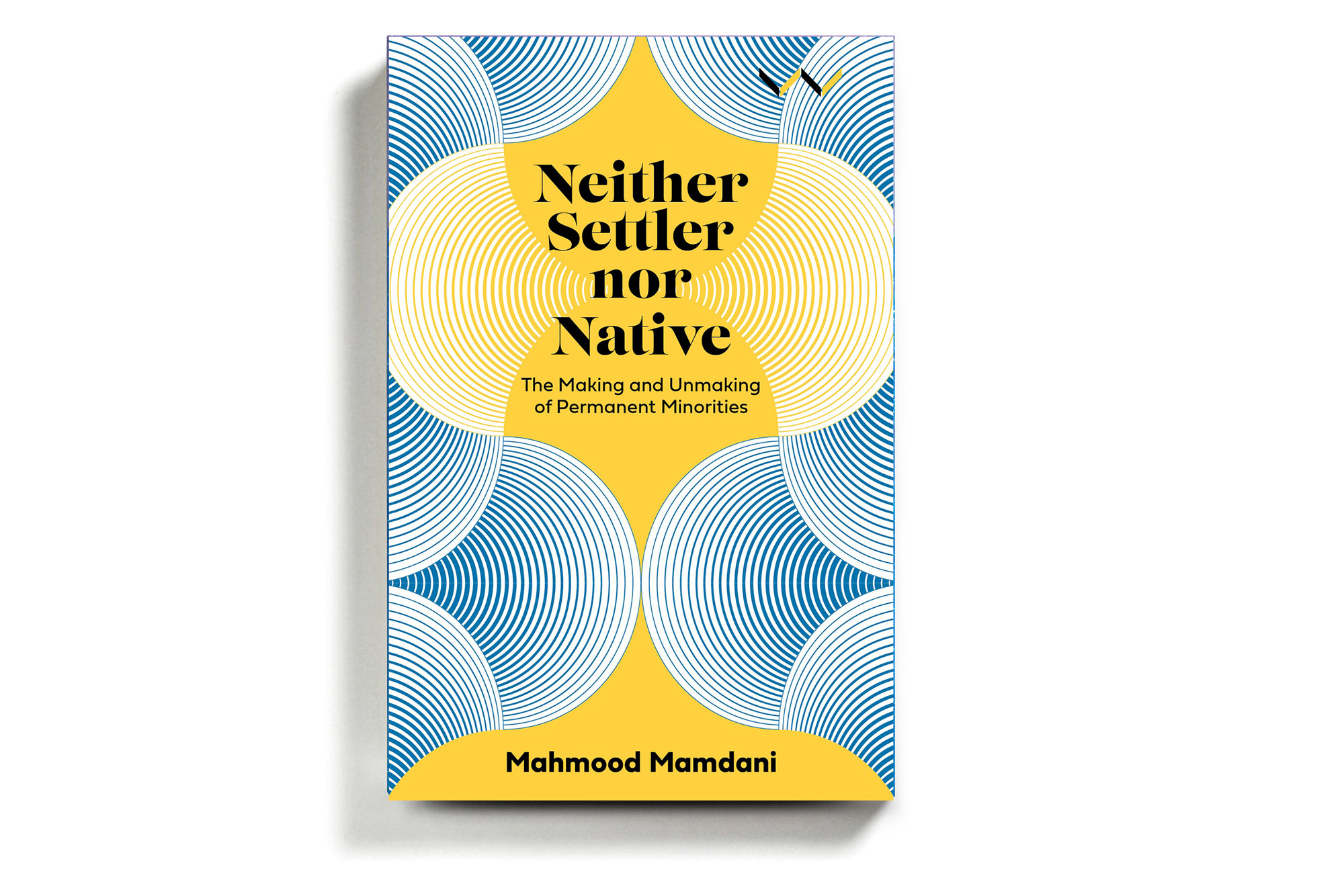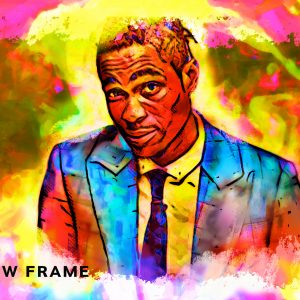New Books | Neither Settler Nor Native
Mahmood Mamdani argues that colonialism created the nation-state by defining categories of people, including the so-called ‘native’ and the settler in South Africa and America.
Author:
24 May 2021

This is a lightly edited excerpt from Neither Settler Nor Native: The Making and Unmaking of Permanent Minorities (Wits University Press, 2020) by Mahmood Mamdani.
Settlers and natives in apartheid South Africa
In a 1998 lecture in South Africa, I asked the following question: When does a settler become a native? The answer, I believed then and believe now, is never. The native, I argued, is a creation of the settler state. The native is the settler’s invented other: the settler claimed not only to be defined by history but to be its maker, at the same time stigmatising the native as an unthinking captive of unchanging custom and a product of geography. My conclusion was that settler and native are joined; neither can exist in isolation. Should you destroy one, the other would cease to exist.
In the course of the struggle against apartheid, South Africans did something remarkable: they tried, with incomplete success, to destroy the settler and the native by reconfiguring both as survivors. They did so by adopting a response to extreme violence that defied the logic of Nuremberg – the logic of separating perpetrators from victims, punishing the perpetrators and creating separate spheres in which the two could live without harming each other in an ongoing cycle of violence.
By thinking of extreme violence as a political rather than criminal act, South Africans were able to shift focus from individual transgressions of law to the issues that drove the violence and the needs of the people who survived it. Instead of going to court, they sat around the conference table. Rather than turn to a trial to produce truth and punish offenders, they negotiated reforms to make the political system more inclusive, recognising that perpetrators as well had to be brought into the political fold.
Above all, South Africans came to recognise that political identities are not permanent or natural. Activists overcame differences of race imposed on them – differences marked as African, Coloured, Indian and white – to join in a single cause of breaking down apartheid. Afrikaners, once champions of apartheid, became part of the movement against it. These groups had been formed under colonialism as distinct and often rivalrous, their interests said to be naturally divergent. Because of the racial difference imputed to them, they were subject to different laws and granted different opportunities to participate in the political community, or sometimes no opportunity at all. But in response to apartheid, these people learned to think anew their political relation to each other: not as others or rivals but as equals in law.
Related article:
In other words, South Africa attempted to decolonise, by breaking down the colonial distinction between settlers and natives and inviting them to participate in the same political community, with settlers reconfigured as immigrants. This attempt was partial. Colonial authorities created, and both colonial and apartheid authorities exploited, two kinds of distinction between settlers and natives: racial distinction and tribal distinction. The struggle against apartheid, and the new South Africa that followed, have made inroads against the politicisation of race. Yet today tribe remains a supposed African tradition. Thus settler and native identities have been dismantled in some respects and retained in others.
The South African case diverges instructively from that of the United States. The two countries have similar colonial histories, but only one has attempted to decolonise. Both are federations of colonised territories; the United States formed from the union of the British colonies during the revolution, South Africa in the early 20th century from the union of the Cape Colony, Natal, the Transvaal and other British dominions, some of which previously had been under Dutch or Boer control. The great majority of the territory circumscribed by each federation was set aside for settlers.
What defined settlers in both countries was not the colour of their skin, although in most settler colonies, the upper echelons of the power structure were and remain overwhelmingly occupied by white-skinned people. (An exception is Liberia.) The settler also was not defined by language, culture, religion, gender or socioeconomic status, however these are conceived; nor by length of residency, immigration status or even citizenship status. There were British settlers in South Africa, as well as Afrikaners; white European settlers in America, some who came involuntarily, as indentured servants, as well as enslaved and free Blacks.
What defined the settler was the law to which she was subject. Call it civil law. Equal subjection to civil law does not mean equality of subjects; settlers were not and are not treated equally. The law may be discriminatory: it may be designed in ways that make it more useful to certain individuals than to others and more useful to certain communities than to others. But all of these individuals and communities are equally subject to the civil law.
Related article:
Within the borders of each federation were and remain inhabitants subject to another kind of law: customary law. The people governed by it are members of native tribes, so called because the civil law groups them that way. If this sounds circular, it is: natives are not natives because of anything essential to them but because they were created as natives in law by settlers. Like civil law, customary law is unequal.
It can offer its native enforcers capricious and tyrannical authority over other natives. But customary law, in both America and South Africa, is in no sense traditional. It is not a practice predating colonisation. Customary law, like civil law, is created by settlers. The particular practices and norms associated with customary law are sometimes inspired by those of an era preceding colonialism, but customary law’s authority over natives, and the authority of natives to wield it, derives from statutes of the civil law.
Those who write the civil law ultimately determine what the customary law is, while the natives themselves serve as customary law’s custodians, implementing it within the tribal territory. Together, the authors and enforcers of law determine, say, who gets to be a tribal member, which land the member may own or use, what religion the member may practice, how the member is to dress and groom himself, or whether the member is at liberty or detained. In this way, settlers ensure that the natives are civilised according to their standards.
As the British colonial secretary in South Africa put it in 1849, customary law would hold so long as it was not “repugnant to the general principles of humanity, recognised throughout the whole civilised world”. This proclamation underlined the fact that every colonial power held itself to be the representative of the civilised world and the guardian of general principles of humanity.
Related article:
In the domain of civil law, the US and South African settler states subjugated residents racially. In the domain of customary law, both settler states subjugated residents tribally. These regimes of racial and tribal control overlapped, but they were not and are not reducible to each other. The racial regime embedded in civil law enjoined both the privileged racial community and the deprived racial community to participate in an order in which the privileged benefitted from the labour of the deprived. The tribal regime embedded in customary law enjoined only natives.
In South Africa, customary law applied to all natives, but only natives considered indigenous within particular tribal homelands had customary rights. Other natives, deemed immigrants within these tribal homelands, were denied the protections of customary law, including customary rights to land. In the United States, too, natives considered nonindigenous within a particular reservation are denied membership and therefore customary rights. Thus tribal – customary – law has itself been made discriminatory.
Customary and civil law and their divergent jurisdictions constituted the backbone of the colonial systems in the United States and South Africa. That system is retained in the United States today, largely without changes. In South Africa, it was altered dramatically by the introduction of apartheid in the late 1940s. From the standpoint of the white-dominated state, apartheid was necessitated by the breakdown of the dual system of tribal and racial control amid industrialisation. With the economy booming, Africans were moving into cities for work. And when they arrived, some of them organised into unions demanding better pay and treatment.
The presence of African agitators in urban South Africa – and the threat they posed to the economic interests of whites – was a crisis in need of solution. Apartheid was that solution: an effort artificially to retribalise millions of natives by forcibly settling them in homelands, renamed Bantustans, which would be administered under the tightened fist of native authorities. Africans could return to cities as migrant labourers, but they would be denied the right to reside there. If the market economy detribalised labour, forcing it out of villages into industry, apartheid’s political solution was to retribalise that labour by sending it “home”.
Related article:
Apartheid, too, sparked unrest and eventually crisis. But this time the crisis had a productive resolution: the Convention for a Democratic South Africa (Codesa), the negotiations to end apartheid carried out between 1990 and 1994. It is Codesa, in particular, that rejected the Nuremberg model. The goal was never to single out perpetrators – to name and shame, in the parlance of the contemporary, Nuremberg-inspired human rights regime. Codesa’s goal was to create a new political system in which all members of the preceding regime – both enemies and supporters of apartheid – would be included.
The creation of a new political system did not happen in Europe after World War II. The victims and the perpetrators were separated by means of ethnic cleansing and the establishment of the state of Israel. The post-conflict German state was built by outsiders, while the internal resistance to the Nazis was denied participation. In South Africa, internal resistance movements forced the issue of apartheid’s injustice, necessitating the settlement that ended apartheid. In critical ways, that settlement reflected the key transformation wrought by the resistance.
The Black Consciousness Movement, labour organisers and student groups opposed to apartheid overwrote the political identification associated with race. They encouraged Africans, Coloureds, Indians, and whites to see themselves as capable of inhabiting the same political community. They showed that political identity is mutable, not inborn; that it is a product of history. The state that followed apartheid bore this out by uniting South Africans under a single government and law – albeit with many concessions to whites, intended to keep them at the negotiating table.
It was, however, not the internal resistance from anti-apartheid groups that led the negotiations. That task fell to representatives of more mainstream organisations, such as the African National Congress (ANC), headed by Nelson Mandela. In the 1960s the ANC and others initially engaged in a militant “liberation movement” modelled on those of other decolonising African states such as Mozambique, Angola and Algeria.
Related article:
But efforts at armed liberation in South Africa resulted in crackdowns on militant leaders like Mandela, who were imprisoned or expatriated. In prison and exile, armed liberators lost connection with the very constituencies whose challenges they were committed to addressing. More like diplomats, they won the favour of international politicians and boycott movements and gained prestige.
Perhaps it was through these international engagements that they learned to be neoliberal – to reduce the work of political systems to the work of individuals, as Nuremberg had. The result was the most famous but least constructive mechanism of the postapartheid transition: truth and reconciliation. Whereas Codesa responded to apartheid by imagining a new political community in which enemies became adversaries, the Truth and Reconciliation Commission (TRC) sought to pin blame on individual perpetrators and provide restitution to individual victims.
Formed in 1995, the TRC transformed the political violence of apartheid into criminal violence, per the Nuremberg-inspired human rights regime. The results were perverse. The TRC ignored millions of Black political prisoners and victims of ethnic cleansing, displaced from their homes into Bantustans. The commission cataloged just 20 000 cases of victimisation. In the meantime, the TRC absolved apartheid’s white constituency by putting all responsibility on individual perpetrators.
The TRC’s narrative of apartheid tells South Africans to ignore their history. It says that violence comes down to people’s personal choices – that it is not a matter of how the state functions or a product of the ways that political constituencies think about the issues that matter to them. This narrative helps to maintain racial privilege even in a South Africa with formal racial equality: whites, ignorant of their complicity as beneficiaries of apartheid, continue to function as a social elite. The result is growing tension over a political system that provides for universal franchise but cannot supply social justice.
Related article:
The concessions made to whites during the negotiations to end apartheid – concessions enshrined in the national Constitution and in laws governing local administration – ensure that the problem of social justice will not be solved any time soon. But it is important to realise that, in exchange for those concessions, something critical was achieved. The crisis of apartheid might have been resolved with mass bloodshed, leading either to new forms of legal subjugation or to political and spatial separation. Both outcomes would likely have fostered more violence, in an ongoing cycle.
Instead South Africa now has competing political constituencies working to achieve their goals under the aegis of a system seen as legitimate by the participants. This is possible because, in spite of the TRC, enough South Africans have been willing to rethink political identity. They have come to recognise that the racial political identities of the past were not timeless but rather created by political processes. As such they could be dismantled by political processes as well.
South Africans have thus felled one pillar of the settler-versus-native distinction in their country: race as political identity. This is the key divergence from the US situation. The United States, too, has partially deracialised, but in the US condition, this does not constitute decolonisation, for racialisation in the United States does not distinguish settler from native. In the United States, the determinants of the native-versus-settler distinction are more firmly rooted today than ever before – so deep in the marrow of law and society that they are invisible. In South Africa, half of those determinants were made visible and were contested.
The other pillar of the settler-versus-native distinction, tribe, persists in the architecture of the South African state, as it does in the United States. In South Africa, tribe has been naturalised, presumed to be part of a timeless native – that is, African – culture. In the former Bantustans, the regime of customary law remains substantially unreformed.
In rural South Africa, violence continues among Africans who define themselves as tribally distinct. Africans are still denied rights under the customary regime, should they live in the “wrong” tribal homeland. In urban South Africa, Africans and other persons of colour seen as tribal strangers, and thus intruders, are periodically the target of what is called xenophobic violence. South Africa’s story tells us much about how a society can go about decolonising. But it also speaks to the enormous challenge of that worthy project.






